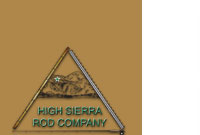







We get asked this question over and over, so here are some advantages of a split-bamboo fly rod. We hesitate to compare Bamboo vs. Graphite, as that is analogous to comparing apples to oranges.
Both rods have advantages and disadvantages. Any fly shop salesperson will profess the advantages of graphite that he or she empirically derived, and more than likely will also affirm the disadvantages of split-bamboo while never having had the pleasure of casting one.
First and foremost, bamboo rods are more aesthetically pleasing, and can be works of art. Each rod exhibits a unique look and feel. The color may range from pale straw, shades of tan through rich brown. The color is intensified by near perfect layers of varnish. Silk wraps, nickel silver ferrules and hardware, exotic wood reel seat, and natural cork handle compliment the rod. The bamboo rod is a true heirloom that can be handed down from generation to generation.
One major difference lies in the structural differences. With bamboo, you have a solid structure consisting of fibers with varying densities. With graphite you have a hollow tube of uniform material. The result is that bamboo is smoother, closer to natural action and less tiring.
You may hear that bamboo rods are heavier. This is true, however, this relatively small increase in weight is also one of its advantages, for this additional weight gives these rods an inherent loading characteristic that makes them very smooth casting.
Bamboo rods are more expensive, but prices for good graphite rods are approaching those of bamboo rods. A typical bamboo rod takes from 40 to 60 hours to craft. Like any handcrafted instrument, a bamboo rod assumes some of the rod makers soul, unlike machine produced rods.
Some people believe that all bamboo rods have slow action; take sets and can break easy. This is simply not true. Modern bamboo rods are heat tempered and are less likely to take sets as some older bamboo rods may have. And if a bamboo rod is broken, it more than likely can be repaired unlike graphite rods.
Bamboo rods are built using standard or proprietary tapers. Most makers will empirically derive their own tapers, while others may use known, existing tapers. In either case, these tapers may manifest a fast, medium or slow action. In fact, some rod makers offer very fast bamboo rods which would rival the action of any graphite rod.
The bamboo used for making split-bamboo fly rods today is almost entirely Pseudosasa Amabilis (one of our plants pictured to the left) which is also known as Teastick Bamboo, Tonkin Cane (a misnomer) and as Arundinaria Amabilis McClure (a synonym).
Specifications subject to change without notice.
Copyright © 1998-2006 High Sierra Rod Company. All Rights Reserved.
 |
 |
|
|||||
|
|
 |
|
|||||
|
|
 |
|
|||||
|
|
|
||||||
|
|
|
||||||
|
|
|
||||||
|
|
|
||||||
|
|
|
||||||
|
|
|
||||||
|
|
|
||||||
|
|
|
||||||
|
|
|
||||||
|
|
|
||||||
 |
|
||||||
|
|
|
|
 |
|
|||

|
|
||||||
 |
|
||||||